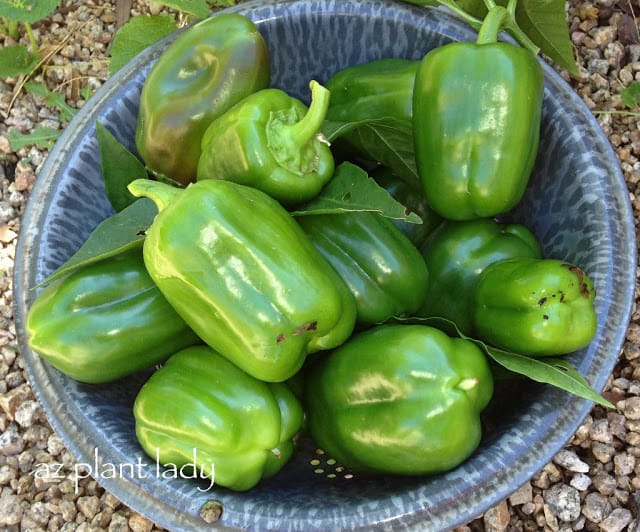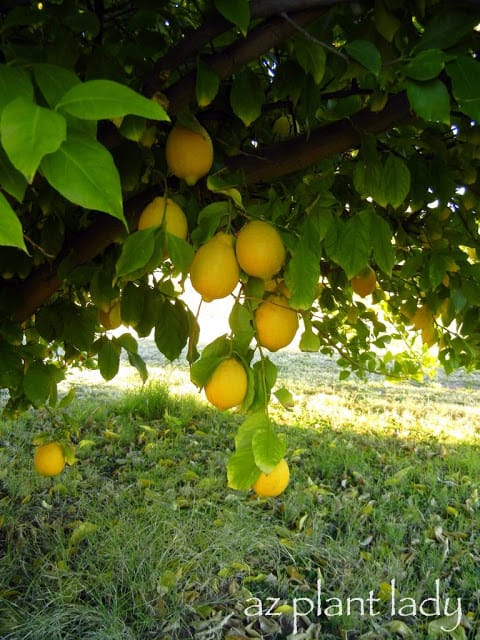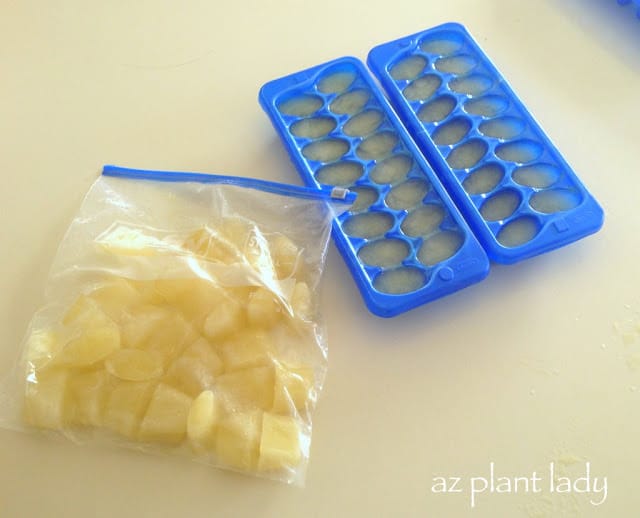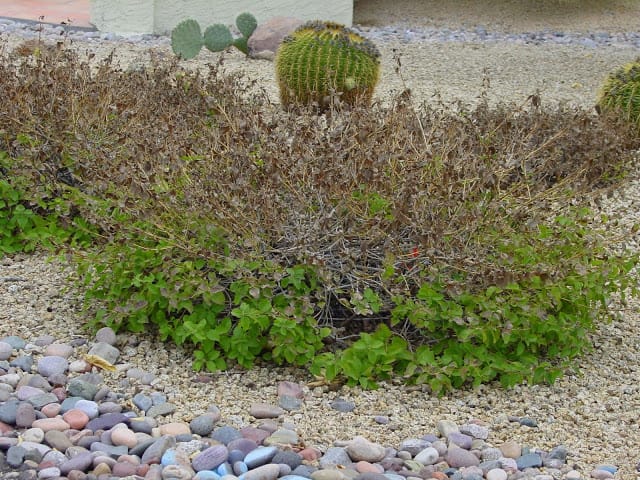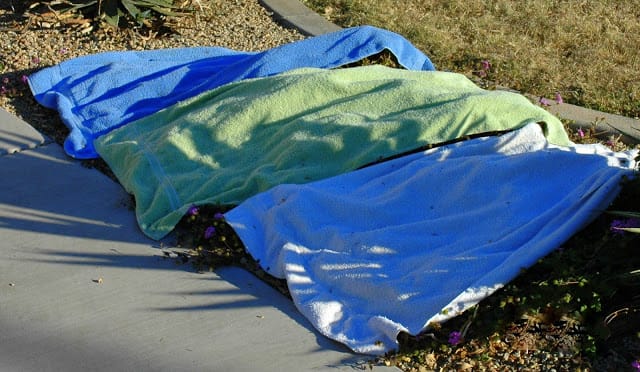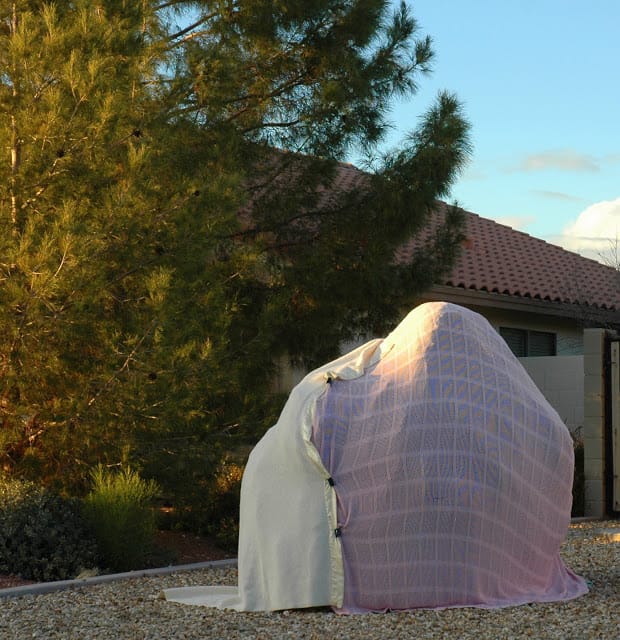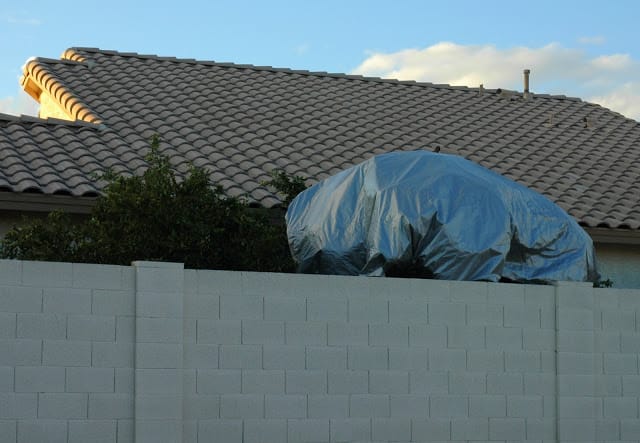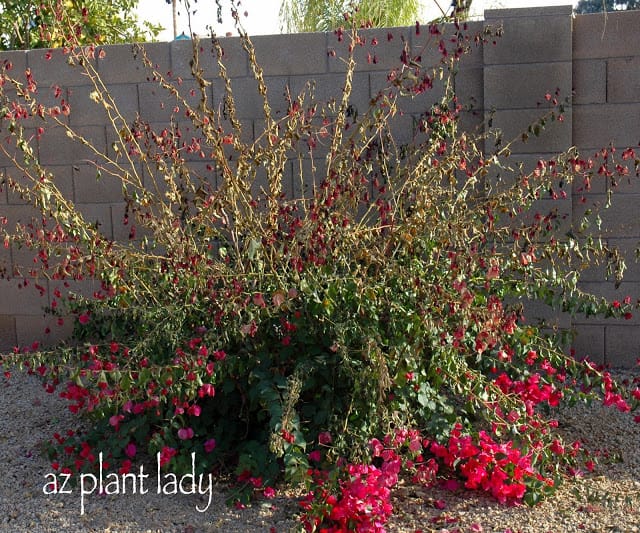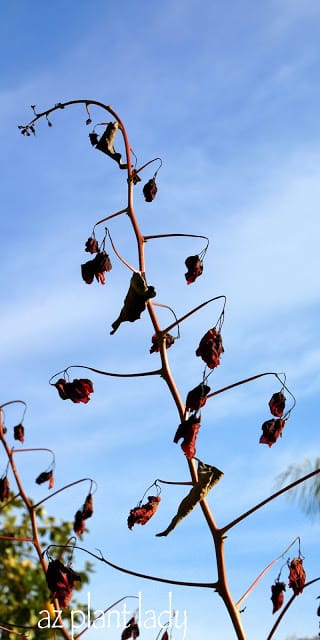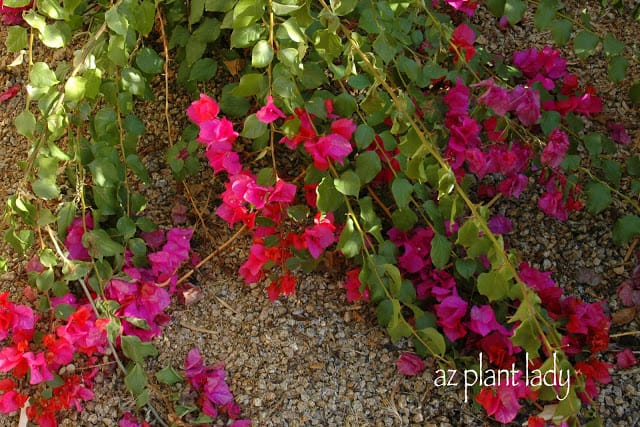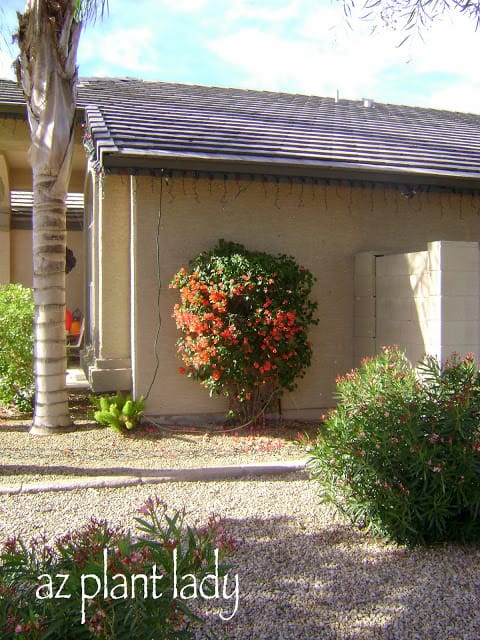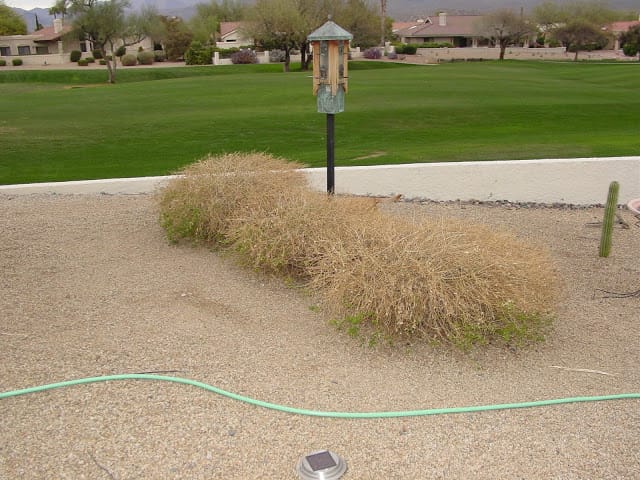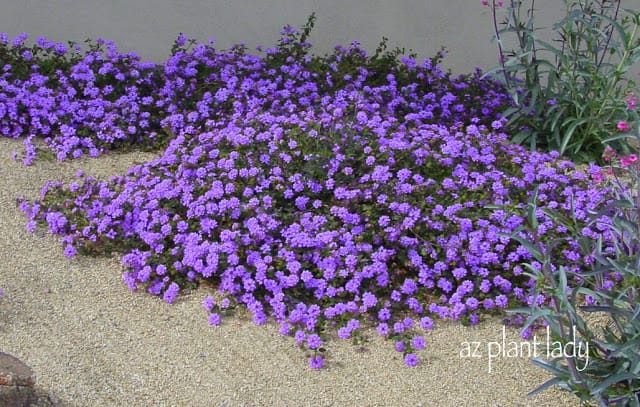Many of you may be taking inventory of your garden after the extreme cold spell we just went through in the desert southwest. Temperatures dipped into the 20’s, which is quite cold for us desert dwellers. As a result, there are many plants that for lack of a better description, look brown and crispy…..
Bougainvillea
Not a pretty sight, is it?
Well, that is the price we pay for growing tropical plants in our semi-tropical climate. In return for the beauty these plants give us 9 months of the year, we have to put up with 3 months of ugly.
My own garden has a mix of brown and crispy plants along with some plants that are better adapted to the cold and are still nice and green.
First, the brown and crispy:
My large Bush Lantana (Lantana camara) is no longer green. The leaves have turned brown and are now falling off. I can now see some trash that has collected underneath as well.
Brown and Crispy Plants
My own Bougainvillea is hardly recognizable anymore. I had hoped that the freeze would have killed the green weed that keeps growing through this particular Bougainvillea, but wouldn’t you know it…..it is still green.
My large Orange Jubilee shrub (Tecoma x ‘Orange Jubilee’) got hit hard as well. It is interesting to note that the part of the shrub that is still green lies underneath the branches of my Cascalote tree, which offered some protection from the frost.
One of my favorite shrubs, Arizona Yellow Bells (Tecoma stans stans) was also affected by the cold weather.
The severe cold also had an interesting affect on my flowering Agave desmettiana….
Not only were the leaves damaged by the cold, but the forming flowers on the stalk were also damaged.
Just a few days ago, the flowers were upright and growing quickly.
I’m not sure if the tip of the flowering stalk was damaged as well. If it wasn’t, it will continue to grow upwards and have a few more flowers to form.
This past cold spell was extreme and so some of the damage I have seen is rather rare, like the damaged Agave. It will be interesting to see how it does in the coming days.
Some of my tropical plants weathered the cold very well, including my Gold Lantana.
The reason they still look so green is that they are partially protected by the overhang of my roof and the fact that I also covered them at night.
I took a drive through my neighborhood to see how other gardens fared with the cold.
We have quite a few brown Ficus trees around the neighborhood. You know, some people just love Ficus trees and lament the frost damage that occurs every few years when we have an exceptionally hard freeze. But, that is what happens with Ficus trees and will continue to happen when we have extra cold weather.
**For those people who ask me for an alternative tree, I always recommend using a Sissoo tree (Dalbergia sissoo), which has a beautiful green canopy and fares better in the cold.
I’m not sure what plant is hidden underneath these blankets, but I suspect that it might be a Bougainvillea.
These Natal Plum shrubs are only partially protected. I guess the homeowner ran out of towels? The shrubs may end up with interesting patterns of green and brown foliage.
Did you know that using plastic this way does not protect your plants from the cold? When plastic touches the leaves, it actually causes them to release heat. Plastic should only be used with a frame so that the foliage does not touch the plastic itself.
Although we do have our share of cold winter days, this past cold spell was extreme and so some of the damage I have seen is rather rare, like the damaged Agave. It will be interesting to see how it does in the coming days.
You may wonder why I use tropical plants in my garden, since they do go through an ugly period each winter. Well, if all I had in my garden was tropical plants, winter would be kind of depressing. But thankfully, I do have quite a few plants that hold up very well to the winter cold.
In my next post, I will showcase those plants that did weather our cold spell very well.
